Google recently announced that starting next year, it will be phasing out similar audiences. So what are they, what’s replacing them, and what do you need to know? Read on to find out, with expert input from PPC pro Jyll Saskin Gales!
Table of contents
What are similar audiences?
Similar audiences, or similar segments, are Google’s version of lookalike audiences. They work by finding people who exhibit similar online behavior to those in your remarketing lists (such as website visitors, customer lists, video viewers, etc.) and can be used across all campaign types.
When & why are they going away?
Google says that the change is to help advertisers keep up with changes in consumer behavior and online marketing strategies as the privacy environment rapidly evolves. Here’s the timeline:
- May 2023: Google will stop generating new similar audience segments and stop adding existing similar audience segments to campaigns and ad groups. Campaigns or ad groups that have similar segments will continue to run.
- August 2023: Google will remove similar segments from all ad groups and campaigns.
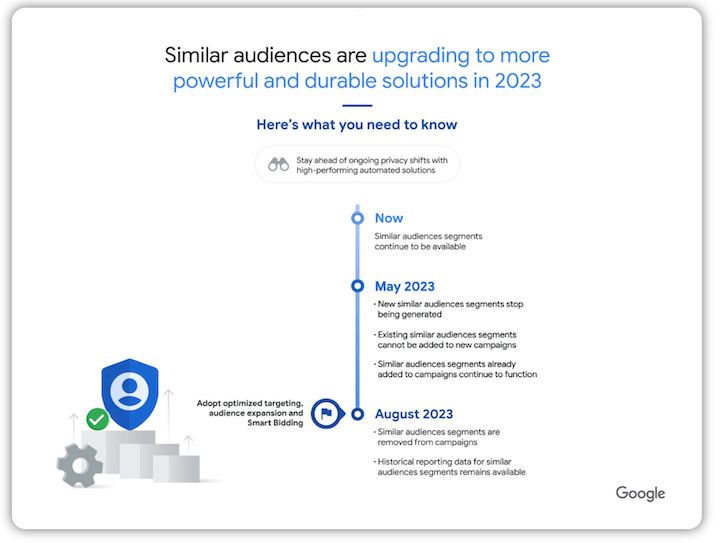
What’s replacing them?
Here’s what Google (and we) recommend you use in place of similar segments:
- For Discovery, Display, and Video action campaigns, use optimized targeting with first-party audiences.
- For video reach or consideration campaigns, use audience expansion.
- For Search and Shopping campaigns, use Smart Bidding, which automatically leverages signals from your first party data.
The Smart Bidding part is pretty self-explanatory, and you can learn more about bidding strategies here. But the Optimized targeting vs audience expansion piece is a little more confusing…
Similar audiences vs audience expansion vs optimized targeting
So what’s the difference between similar audiences, audience expansion, and optimized targeting? Let’s unpack them.
Similar audiences find people who resemble those in your existing audience segments (remarketing lists), meaning Google will still obey your audience targeting parameters.
Both Optimized targeting and Audience expansion will find people outside of your existing audience targeting parameters, but to different extents.
Audience expansion will expand upon your existing audience, but will not venture into segments that are too unlike your existing audience, even if users in those segments are likely to convert. It is expanding that audience.
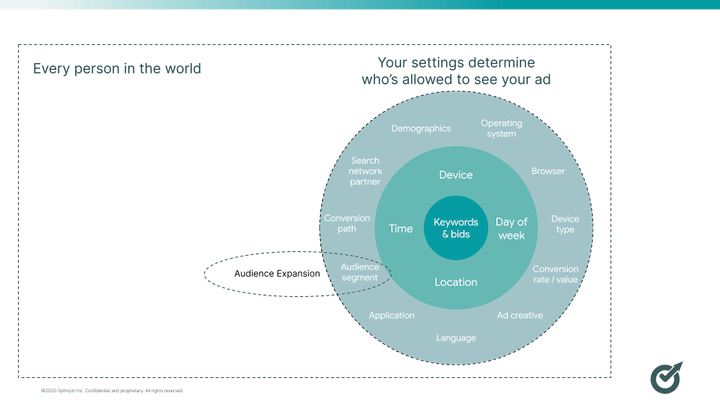
Optimized targeting, on the other hand, is expanding those conversions, so it will find people similar to people who are converting on your ad, however you’ve defined a conversion: purchasers, leads, engagers, etc—even if they are dissimilar from your original audience profile. Optimized targeting was launched in June 2021.
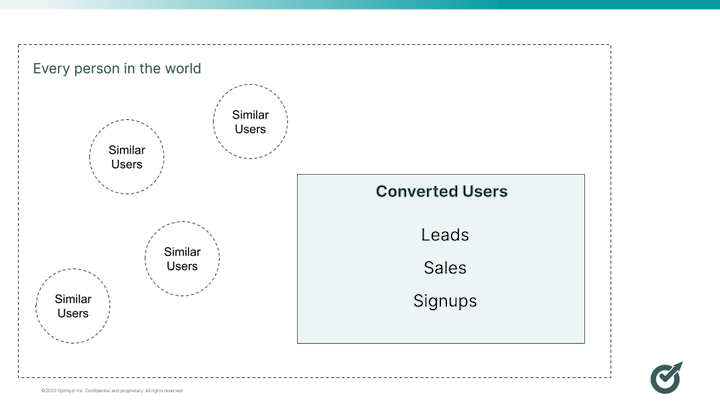
So it makes sense that Audience expansion is only available for reach-focused Video campaigns (Video campaigns that use the “Product and brand consideration” or “Brand awareness and reach” goal) while Optimized targeting is only available for Discovery, Display, and conversion-focused Video campaigns (Video action campaigns).
Note that Optimized targeting is automatically turned on at the ad group level for those campaign types. You can get a refresher on all Google Ads campaign types here.
Expert tips on optimized targeting
I talked with Google Ads coach Jyll Saskin Gales on this, as she just recently crafted this Google Ads audience targeting cheat sheet, and she shares her tips and perspectives on Optimized targeting here.
Think of optimized targeting as the “broad match” of the audience world
“This is one of those scenarios where, in my opinion, Google makes things way more complicated than they need to be! Most people probably don’t even know that Audience expansion and Optimized targeting are two different things, and honestly, the distinction isn’t terribly important.
Personally, I think of optimized targeting as the ‘broad match’ of the audience world.
The purpose is to let the algorithms do what they do best, and find pockets of opportunity to get you a better CPA, ROAS, or whatever metric your bid strategy is optimized for (ergo, optimized targeting).”

Turn optimized targeting on now
“I recommend turning optimized targeting on for any eligible campaigns using similar segments as soon as you’re able. This will give your campaigns time to learn and optimize (Ha!) before it’s too late.
Keep it on for a week or two, then check your audience reporting on the Audiences tab to see how your segments are performing versus optimized targeting.
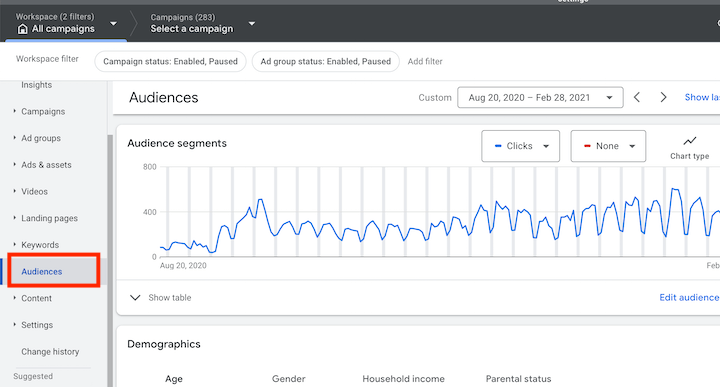
- If they are similar, keep them both on.
- If optimized targeting is performing significantly better than your audiences, keep it on and revisit your audience selections.
- If optimized targeting is performing significantly worse than your audiences, turn it off.”
Don’t use optimized targeting in a remarketing campaign
“Remember, you never want to use Optimized targeting in a remarketing campaign because, by definition, remarketing is showing ads to people who already have a relationship with your business, whereas Optimized targeting is going to find people who aren’t necessarily on your remarketing list.”
Speaking of which, you may want to check out some more remarketing mistakes to avoid here.
Onward & upward
We’ll finish it off with the final bottom line from Jyll: Start using optimized targeting now!
“We Google Ads practitioners have adapted to many big changes recently, from the changes in how keyword match types work to the introduction of Performance Max. While optimized targeting may not have been at the top of your Google Ads wishlist, it’s time to start taking it for a test drive if you haven’t already.”
Thanks for these pointers, Jyll!

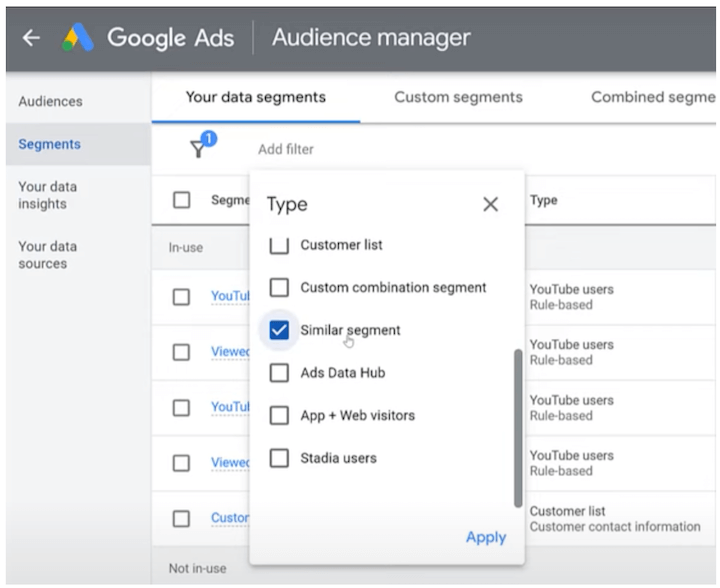

0 Comments